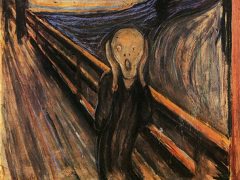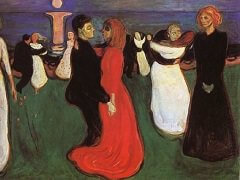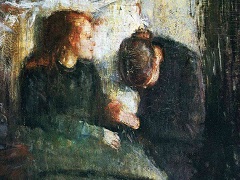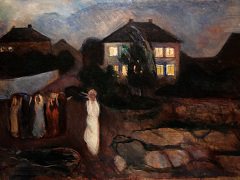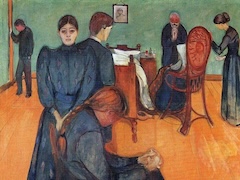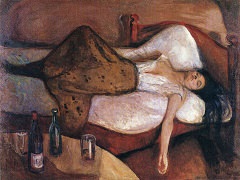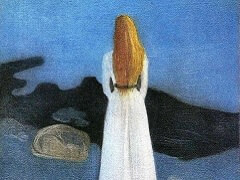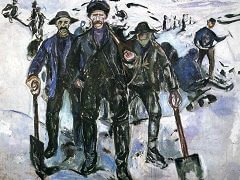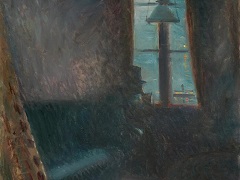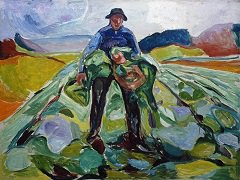Two Human Beings (The Lonely Ones), 1896 by Edvard Munch

The title Two Human Beings is a straightforward description of the motif of this graphic print; The Lonely Ones describes the picture's mood. Two figures with their backs to the viewer - a woman and a man - dominate the composition. The distance between them, the contrast between his dark and her light figure and the subtle twist in the man's torso towards the woman express both attraction and distance. The shore on which they stand and the water they are facing emphasise the mood of yearning and loneliness both thematically and visually. This black and white print is executed in drypoint, a technique which allows soft strokes and surface effects. Munch's finely tuned use of this technique and of half-tone, ranging from dazzling white through to fuzzy darkness, together with the intimate format and tight cropping of the subject, all enhance the tense calm of this love motif.
Munch began working with printmaking in Berlin in autumn 1894 and the plates for Two Human Beings are among the first he created. This print is one of eight that made up a portfolio published by the art historian Julius Meier-Graefe in 1895. The National Museum's copy is dated 1896. Whether or not it is in fact attributable to that year is unclear. Nevertheless, this expressive little print strikingly illustrates that Munch was a masterly graphic artist from the very outset. The print reiterates (in mirror image) the motif of a painting Munch had worked on in the 1890s. That painting has since been lost, although we know of it from a photograph. Munch repeated the motif later in coloured woodcuts (1899 and 1917).

